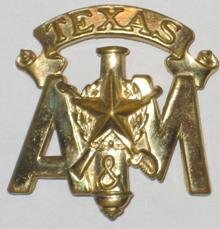 Unlike in Texas state courts, where upon arrest a (normally) affordable surety bond amount is set by a magistrate, in Federal court in the Eastern District of Texas Sherman Division there is no “bail bond” procedure. Instead, when arrested for a federal offense, you are taken before a magistrate judge, a judge who basically works for the Presidentially appointed Article 3 Federal Judge. This magistrate determines whether you are released on “conditions of release” or are held pending trial.
Unlike in Texas state courts, where upon arrest a (normally) affordable surety bond amount is set by a magistrate, in Federal court in the Eastern District of Texas Sherman Division there is no “bail bond” procedure. Instead, when arrested for a federal offense, you are taken before a magistrate judge, a judge who basically works for the Presidentially appointed Article 3 Federal Judge. This magistrate determines whether you are released on “conditions of release” or are held pending trial.
Prior to the hearing, an Eastern District of Texas probation officer meets with you about your entire background, including any drug use, and makes a written report for the judge. Any drug use or habit admission substantially increases the likelihood of detention. The government has the option to move for detention or not. In many cases, such as white collar and other non-violent, non-drug cases (usually involving a single defendant), they don’t. However, upon the government’s motion, the judge sets the hearing as soon as possible. This motion is filed at the initial appearance before the judge, and the detention hearing within the next few days or a week after the initial appearance (your attorney and the government have the option to request a continuance).
If you or someone you know is being investigated or prosecuted for a crime, call Board Certified Criminal Law Specialist Micah Belden at 903-744-4252.
 Sherman & Plano, TX Criminal Defense Lawyer Blog
Sherman & Plano, TX Criminal Defense Lawyer Blog



 Mr. Prosecutor keeps looking through the rule, knowing something in there should save Mr. Manziel from getting a separate trial. “Here it is,” he says to himself. Rule 803(24), Statement Against Interest: “[a] statement which was at the time of its making so far contrary to the declarant’s pecuniary or proprietary interest, or so far tended to subject the declarant to civil or criminal liability, or to render invalid a claim by the declarant against another, or to make the declarant an object of hatred, ridicule, or disgrace, that a reasonable person in declarant’s position would not have made the statement unless believing it to be true. In criminal cases, a statement tending to expose the declarant to criminal liability is not admissible unless corroborating circumstances clearly indicate the trustworthiness of the statement.” We find people’s statements that subject themselves to ridicule or liability believable, hence the exception. “Statement against interest, your honor,” says Mr. Prosecutor. “The statement to the reporter subjects the reporter to criminal liability.”
Mr. Prosecutor keeps looking through the rule, knowing something in there should save Mr. Manziel from getting a separate trial. “Here it is,” he says to himself. Rule 803(24), Statement Against Interest: “[a] statement which was at the time of its making so far contrary to the declarant’s pecuniary or proprietary interest, or so far tended to subject the declarant to civil or criminal liability, or to render invalid a claim by the declarant against another, or to make the declarant an object of hatred, ridicule, or disgrace, that a reasonable person in declarant’s position would not have made the statement unless believing it to be true. In criminal cases, a statement tending to expose the declarant to criminal liability is not admissible unless corroborating circumstances clearly indicate the trustworthiness of the statement.” We find people’s statements that subject themselves to ridicule or liability believable, hence the exception. “Statement against interest, your honor,” says Mr. Prosecutor. “The statement to the reporter subjects the reporter to criminal liability.” The prosecutor, frustrated that an extra trial might interfere with his upcoming vacation plans, digs through the rules to somehow admit this evidence without allowing Mr. Manziel to force a separate trial. The judge, having similar vacation plans and not wanting to spend county resources empaneling another jury, looks at him. “Any other exception, Mr. Prosecutor?”
The prosecutor, frustrated that an extra trial might interfere with his upcoming vacation plans, digs through the rules to somehow admit this evidence without allowing Mr. Manziel to force a separate trial. The judge, having similar vacation plans and not wanting to spend county resources empaneling another jury, looks at him. “Any other exception, Mr. Prosecutor?” Rules 801 and 803 provide what is non-hearsay and what are exceptions to hearsay. The prosecutor says, “[a]dmission by a party opponent or coconspirator, your honor.” The autograph broker’s lawyer glances down at Rule 801(e)(2) which says, “[a] statement is not hearsay if…The statement is offered against a party and is: (A) the party’s own statement in either an individual or representative capacity; … or (E) a statement by a co-conspirator of a party during the course and in furtherance of the conspiracy.”
Rules 801 and 803 provide what is non-hearsay and what are exceptions to hearsay. The prosecutor says, “[a]dmission by a party opponent or coconspirator, your honor.” The autograph broker’s lawyer glances down at Rule 801(e)(2) which says, “[a] statement is not hearsay if…The statement is offered against a party and is: (A) the party’s own statement in either an individual or representative capacity; … or (E) a statement by a co-conspirator of a party during the course and in furtherance of the conspiracy.” First, the right of confrontation would require the ESPN reporter to be on the stand to testify as to his knowledge. So, imagine in a criminal court Johnny Manziel and the autograph broker were being tried for violating NCAA rules or inducing said violations? There they sit with their lawyers at the defense table. The prosecutor asks the ESPN reporter, sitting on the witness stand, “Mr. Rovell, please tell the ladies and gentlemen of the jury what this autograph broker told you he did with Johnny Manziel.”
First, the right of confrontation would require the ESPN reporter to be on the stand to testify as to his knowledge. So, imagine in a criminal court Johnny Manziel and the autograph broker were being tried for violating NCAA rules or inducing said violations? There they sit with their lawyers at the defense table. The prosecutor asks the ESPN reporter, sitting on the witness stand, “Mr. Rovell, please tell the ladies and gentlemen of the jury what this autograph broker told you he did with Johnny Manziel.” The rule against hearsay is one of the fundamental rules of the American justice system. It is very similar, although not completely identical, to the rule requiring confrontation of witnesses in a criminal case, i.e., the right to confront one’s accusers. Our nation’s founders were very disturbed at English prosecutions, such as that of Sir Walter Raleigh, based primarily upon letters from third parties as key evidence. Common sense also dictates that a person telling you what they heard another person say, as if they had observed the events personally, is not in any way as reliable as a first-person recollection of events. Texas Rule of Evidence 801(d) states: “‘Hearsay’ is a statement, other than one made by the declarant while testifying at the trial or hearing, offered in evidence to prove the truth of the matter asserted.” Rule 802 says “Hearsay is not admissible except as provided by statute or these rules or by other rules prescribed pursuant to statutory authority…”
The rule against hearsay is one of the fundamental rules of the American justice system. It is very similar, although not completely identical, to the rule requiring confrontation of witnesses in a criminal case, i.e., the right to confront one’s accusers. Our nation’s founders were very disturbed at English prosecutions, such as that of Sir Walter Raleigh, based primarily upon letters from third parties as key evidence. Common sense also dictates that a person telling you what they heard another person say, as if they had observed the events personally, is not in any way as reliable as a first-person recollection of events. Texas Rule of Evidence 801(d) states: “‘Hearsay’ is a statement, other than one made by the declarant while testifying at the trial or hearing, offered in evidence to prove the truth of the matter asserted.” Rule 802 says “Hearsay is not admissible except as provided by statute or these rules or by other rules prescribed pursuant to statutory authority…” The first jury trial I won on aggravated assault was trickier because allegation was threatening injury and displaying a deadly weapon. My client was alleged to have chased his ex-girlfriend/child’s mother’s vehicle up and down the highway with his vehicle, and threatened to ram her (he did bump her a little). Fortunately, the jury found him guilty of the lesser included offense of deadly conduct. This can be a reasonable out in many aggravated assault cases, which in reality are deadly conduct cases.
The first jury trial I won on aggravated assault was trickier because allegation was threatening injury and displaying a deadly weapon. My client was alleged to have chased his ex-girlfriend/child’s mother’s vehicle up and down the highway with his vehicle, and threatened to ram her (he did bump her a little). Fortunately, the jury found him guilty of the lesser included offense of deadly conduct. This can be a reasonable out in many aggravated assault cases, which in reality are deadly conduct cases. What is a deadly weapon? Well, thankfully the code defines that for us as well. Penal Code 1.07(17) says that “‘Deadly weapon’ means: (A) a firearm or anything manifestly designed, made, or adapted for the purpose of inflicting death or serious bodily injury; or (B) anything that in the manner of its use or intended use is capable of causing death or serious bodily injury.” In most cases, the latter is the alleged deadly weapon theory.
What is a deadly weapon? Well, thankfully the code defines that for us as well. Penal Code 1.07(17) says that “‘Deadly weapon’ means: (A) a firearm or anything manifestly designed, made, or adapted for the purpose of inflicting death or serious bodily injury; or (B) anything that in the manner of its use or intended use is capable of causing death or serious bodily injury.” In most cases, the latter is the alleged deadly weapon theory. To understand aggravated assault, one must understand misdemeanor assault. Section 22.01 of the Penal Code defines assault as “(a) A person commits an offense if the person: 1) intentionally, knowingly, or recklessly causes bodily injury to another, including the person’s spouse; [or] (2) intentionally or knowingly threatens another with imminent bodily injury, including the person’s spouse…” Texas Penal Code section 1.07(8) says that “‘Bodily injury’ means physical pain, illness, or any impairment of physical condition.” So, to have an assault you must either cause or threaten bodily injury, which in most cases is physical pain (though illness and other physical impairment are sometimes seen.)
To understand aggravated assault, one must understand misdemeanor assault. Section 22.01 of the Penal Code defines assault as “(a) A person commits an offense if the person: 1) intentionally, knowingly, or recklessly causes bodily injury to another, including the person’s spouse; [or] (2) intentionally or knowingly threatens another with imminent bodily injury, including the person’s spouse…” Texas Penal Code section 1.07(8) says that “‘Bodily injury’ means physical pain, illness, or any impairment of physical condition.” So, to have an assault you must either cause or threaten bodily injury, which in most cases is physical pain (though illness and other physical impairment are sometimes seen.)